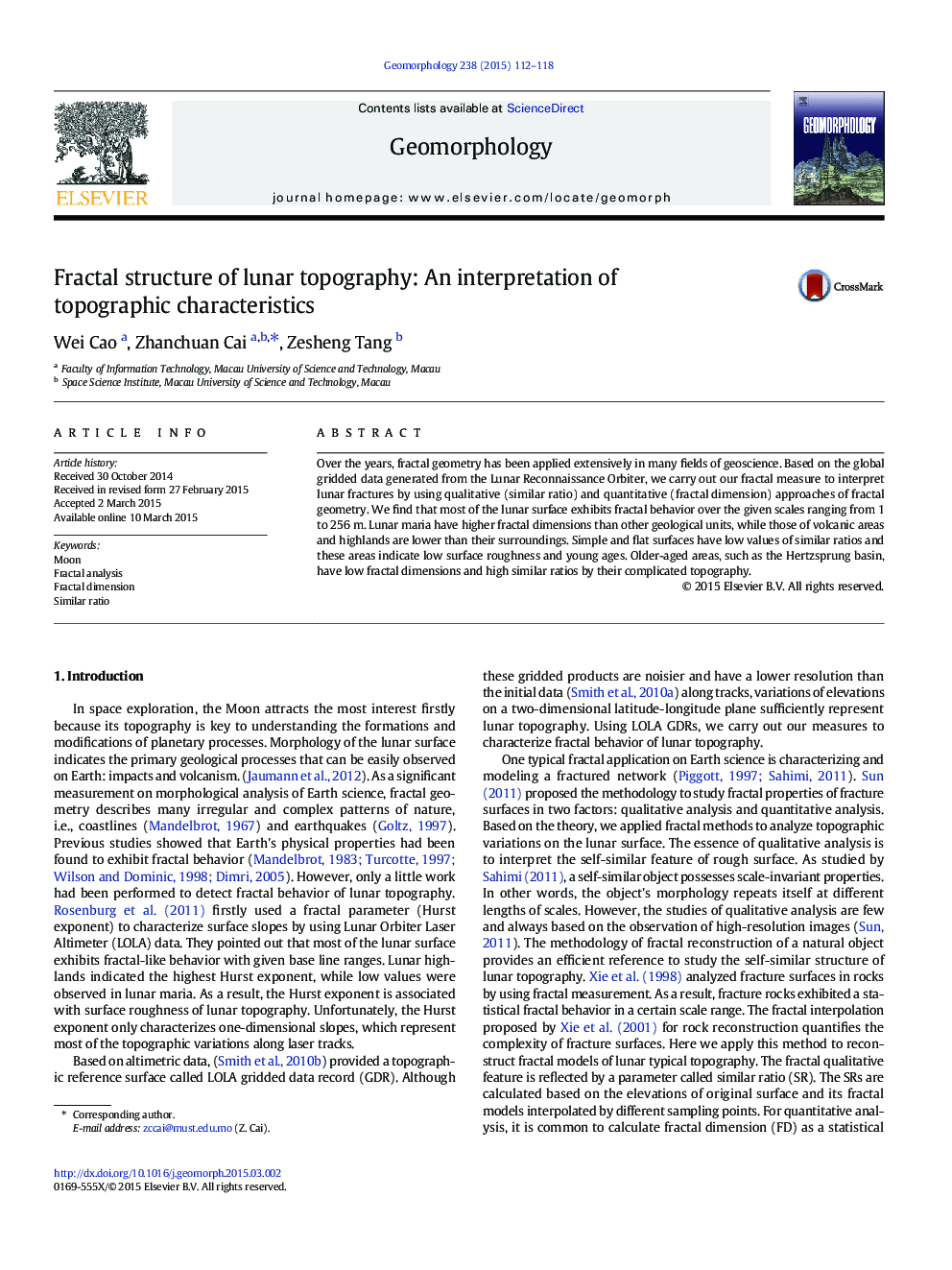| Article ID | Journal | Published Year | Pages | File Type |
|---|---|---|---|---|
| 4684304 | Geomorphology | 2015 | 7 Pages |
•Based on high-resolution DEM, we interpret topographic variations by using fractal methods.•We create multiscale FD maps to interpret some stable geological variations on the Moon.•Old and complicated surfaces have lower fractal dimensions and higher similar ratios than those of young and flat surfaces.
Over the years, fractal geometry has been applied extensively in many fields of geoscience. Based on the global gridded data generated from the Lunar Reconnaissance Orbiter, we carry out our fractal measure to interpret lunar fractures by using qualitative (similar ratio) and quantitative (fractal dimension) approaches of fractal geometry. We find that most of the lunar surface exhibits fractal behavior over the given scales ranging from 1 to 256 m. Lunar maria have higher fractal dimensions than other geological units, while those of volcanic areas and highlands are lower than their surroundings. Simple and flat surfaces have low values of similar ratios and these areas indicate low surface roughness and young ages. Older-aged areas, such as the Hertzsprung basin, have low fractal dimensions and high similar ratios by their complicated topography.
